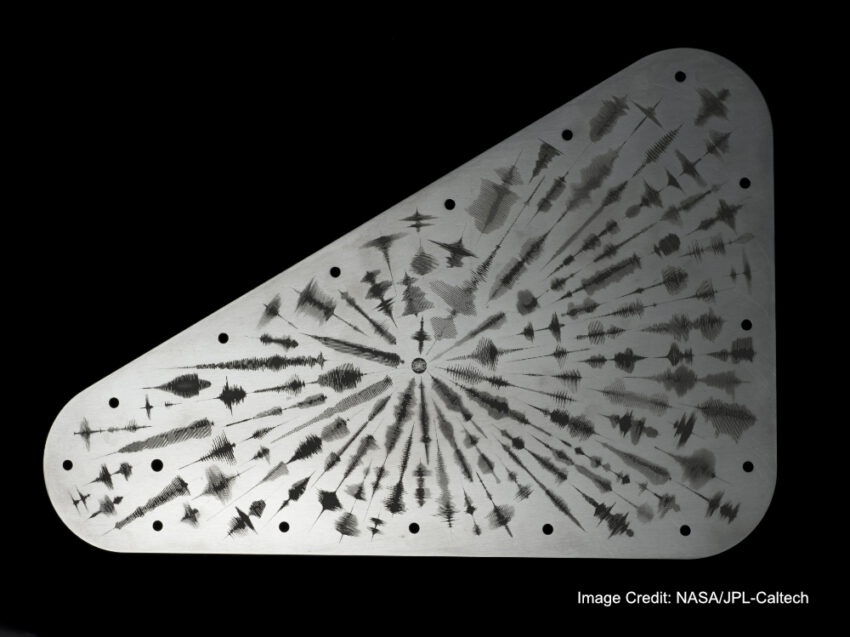NASA is set to launch its Europa Clipper spacecraft in October 2024, which will carry a distinctive message as it embarks on a journey toward Jupiter’s moon, Europa. Showing strong evidence of an ocean beneath its icy surface, Europa holds over double the volume of water found in all of Earth’s oceans combined.
To honor this earth-like connection, the spacecraft will bear a triangular metal plate of tantalum, sizing about 7 by 11 inches. This plate, engraved on both sides, is designed to seal an opening in the clipper’s electronic vault. The vault is a critical feature of the spacecraft, housing its sensitive electronics. Fascinatingly, the plate carries a unique piece of art – waveforms representing the word “water” in 103 different languages. The graphic symbol for “water” in American Sign Language sits at the center of these radiating waveforms.
Europa is the smallest of the four Galilean moons that orbit Jupiter and is the sixth-closest to the planet. Though smaller than Earth’s moon, Europa has a similar construction – a silicate rock core likely surrounded by iron–nickel, enveloped in a water-ice crust. Its smooth surface is youthfully marked by light tan cracks and streaks, showing minimal impact craters.
Europa’s appearance has sparked scientific curiosity and given rise to a working hypothesis of a subsurface water ocean conceivably carrying extraterrestrial life. Supporting evidence includes observations of water vapor plumes similar to ones on Saturn’s moon, Enceladus, and geological features possibly coated by sea salt from a subsurface ocean.
Europa has been a focus of interest for space researchers over the years. The Juno spacecraft undertook a close flyby in September 2022, and an updated analysis of data from the Galileo space probe, which orbited Jupiter from 1995 to 2003, provided further strong evidence of water plume activity on the moon’s surface. More recently, in March 2024, astronomers reported that the surface of Europa may contain considerably less oxygen than presumed earlier.
The Galileo mission, launched in 1989, has yielded most of the current data on Europa. The European Space Agency’s Jupiter Icy Moon Examiner (JUICE) mission, launched on April 14, 2023, will also observe Europa. However, a spacecraft landing on Europa has yet to be accomplished. NASA’s Europa Clipper and its potential complimenting lander expect to contribute additional significant data after its launch in 2024.
Information Box:
Europa was discovered in 1610, independently by Simon Marius and Galileo Galilei. The moon is named after a figure from Greek mythology – Europa, the Phoenician mother of King Minos of Crete and lover of Zeus, the Greek counterpart to the Roman god Jupiter. Europa orbits Jupiter in just over three and a half days and, like its fellow Galilean satellites, is tidally locked to Jupiter with one hemisphere constantly facing the planet.
References:
1: NASA/JPL-Caltech.
2: Galileo Galilei’s findings on Europa.
3: The Galileo mission & recent data on Europa.
4: The Juno spacecraft’s flyby of Europa.
5: Data and hypothesis on Europa’s subsurface ocean.
6: Future missions to Europa – The Jupiter Icy Moon Examiner and The Europa Clipper.

